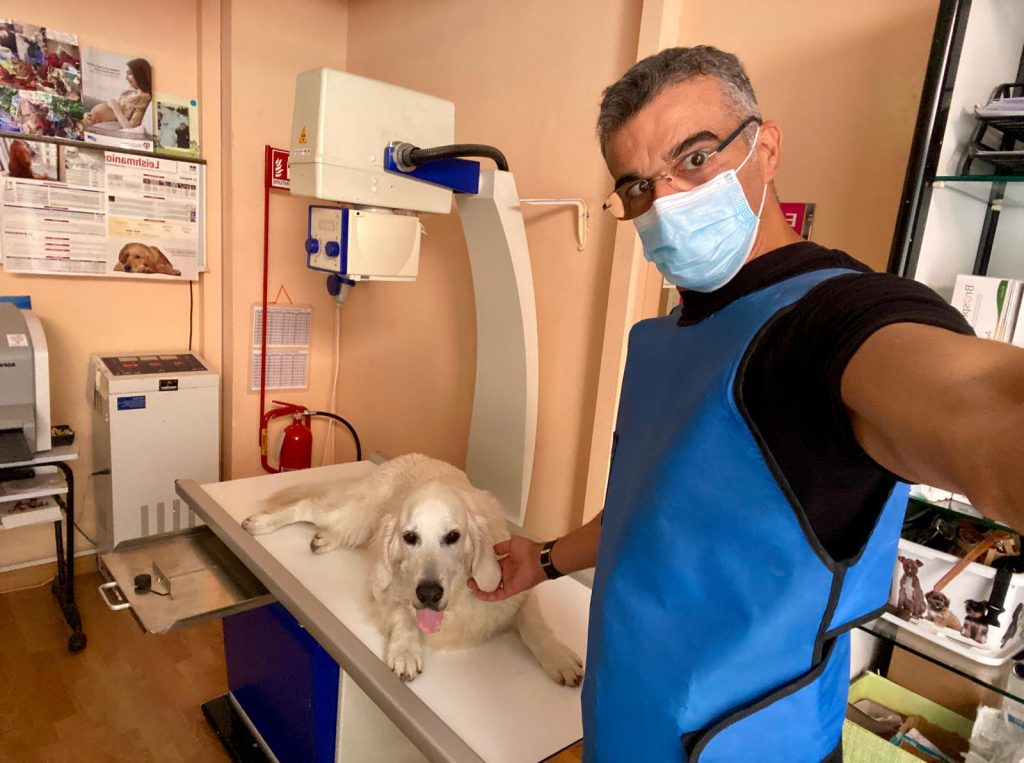
Over recent years, many dog owners have noticed a worrying trend: veterinary costs are soaring, and regular check-ups are becoming a financial burden. What used to be an affordable routine visit now often feels like a luxury. As a result, more people are delaying care, or skipping it altogether, and that comes with serious consequences for our dogs’ long-term health.
Pet care wasn’t always the multi-billion-pound industry it is today. Until 1999, only qualified vets could own a veterinary practice, meaning most clinics were independent or small, locally run partnerships. The chair of the British Veterinary Union (BVU) Suzanna Hudson-Cooke, explains that, and I quote, “Back then, it was normal for veterinary surgeons to work in a practice, buy into the partnership and end up as a partner at their own practice.”
Unfortunately, that all changed after deregulation. Large corporations were suddenly free to buy out practices, and many did so quietly. These conglomerates now own a significant portion of vet practices across the UK. In 2013, just 10% of vet clinics were owned by the “big six” corporate groups: Pets at Home, CVS Group, IVC, Linnaeus, VetPartners, and Medivet. Fast-forward to 2024, and those same six giants now own 60% of UK practices. While they often bring polished branding and sleek new technology, they also bring centralised pricing models and a profit-driven mindset. What this means for pet owners is often a less personal service at a significantly higher cost. What’s more, many keep the original practice name, giving clients the impression they’re still visiting a friendly, independent clinic, when in reality, profits are going to multinational companies and private equity firms.
For example:
- VetPartners is owned by BC Partners, a private equity firm.
- Linnaeus is owned by Mars, the global food giant behind brands like Whiskas and Pedigree.
- IVC (the largest group) is owned by Nestlé and private equity firms Silver Lake and EQT.
- Medivet counts among its investors LGT Capital Partners, controlled by the royal family of Liechtenstein.
For these corporations, pet care is a “favourable sector” thanks to the growing humanisation (anthropomorphism) of our pets, but for owners, the impact is clear. Costs have soared. A 2022 Dogs Trust survey found that 1 in 10 UK dog owners have gone into debt just to cover their pet’s medical bills. When vet care becomes too expensive, owners are forced into difficult decisions. Skipping vaccinations, ignoring early warning signs, or avoiding annual wellness checks may seem like ways to save money in the short term, but they can lead to larger, more expensive problems later on.
Some of the large corporate pet care providers now market subscription-based services, aiming to secure client loyalty with monthly fees. On the surface, these packages may appear reassuring, but they can also create an underlying assumption that illness is inevitable. In practice, the model is designed to generate a steady income stream for the company, often placing more emphasis on treatment than on prevention. This contrasts sharply with a more holistic approach, where the focus is on proactive care, balanced lifestyle, nutrition, exercise, and emotional well-being, all of which can reduce the likelihood of illness in the first place. For me, true loyalty in pet care comes not from locking owners into a financial plan, but from building trust, offering transparency, and prioritising the long-term health of the dog above all else.
Regular vet visits are essential for:
- Early detection of disease
- Monitoring age-related changes
- Keeping vaccinations and parasite control up to date
- Receiving behavioural or dietary advice
Unfortunately, many families are feeling priced out of these basics.
So, what does this mean for you and your dog?
Rising vet fees may force some owners into impossible choices, delaying care or cutting corners when their pet needs help most. What can pet owners do to protect your pet’s health without breaking the bank?
- Prioritise preventive care – catching issues early can save you thousands
- Explore independent vets – some still offer fair pricing and personal care
- Consider pet insurance – especially for emergencies or chronic conditions
- Educate yourself – understand breed-specific risks and wellness needs
Ultimately the question is: should essential veterinary care be a profit-driven industry, or should we be pushing for transparency, fair pricing, and protection for pet owners?
As a dog trainer and behaviour specialist, I’ve always believed that wellness is more than vet visits. A good diet, proper exercise, socialisation, mental stimulation, and clear communication all play a vital role in keeping your dog healthy and happy. That said, no amount of training or lifestyle adjustments can replace medical care when it’s needed. That’s why I’m passionate about starting conversations around accessible, responsible pet ownership, something I explore further in my book on dog behaviour and holistic care.
I would really love to hear from other dog owners:
- Have you ever used one of these subscription plans?
- Did you feel it offered genuine value, or was it more about peace of mind?
- Do you prefer pay-as-you-go services, or do you like the structure of a monthly plan?
I’m collecting different perspectives as part of my ongoing research and self-enrichment, so your input would be really valuable.
Thank You



Leave a Reply